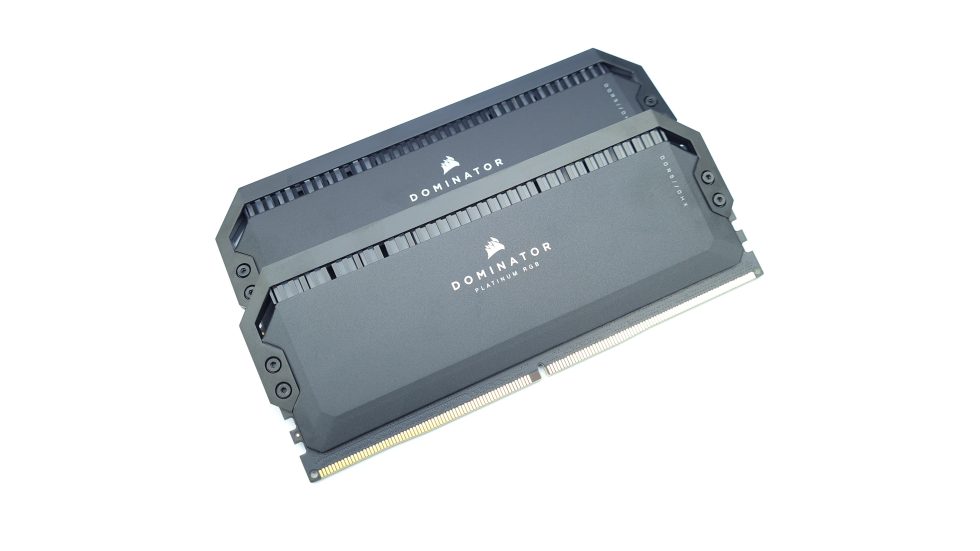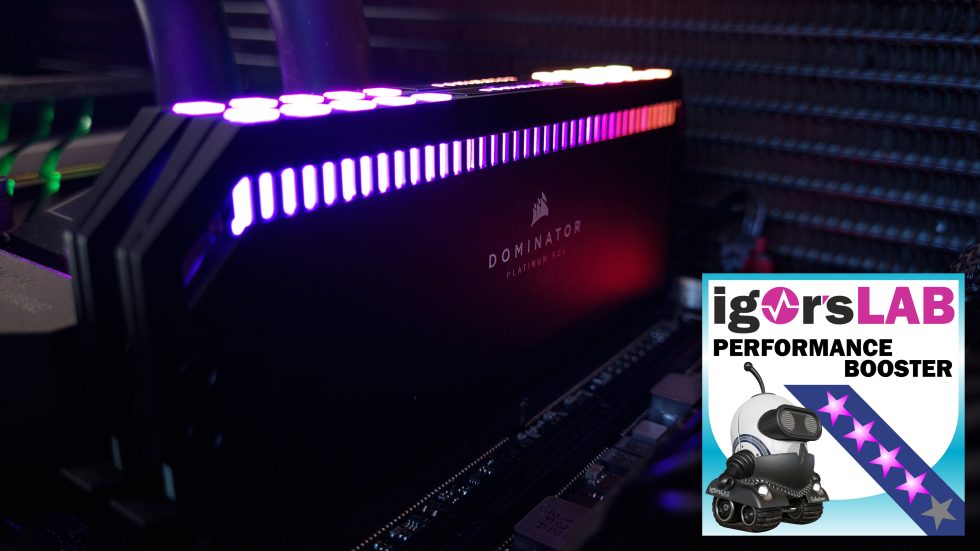Summary and conclusion
The fact that an Alder Lake CPU isn’t necessarily dependent on DDR5 and can still achieve very good results with the older memory standard will come as little surprise to our loyal readers, as we covered this in previous articles on the Alder Lake platform. But there are also many advantages for the new modules, like the higher possible capacities and clock rates, and of course the compatibility for future platforms.
The fact that you can sometimes achieve a significant acceleration with DDR5 in applications with a preference for high transfer rates is actually already cold coffee. But for the first time today, with the Corsair kit based on the Samsung 16 Gbit B-Die memory ICs, we were also able to regain much of the latency disadvantage of the new RAM standard. With SKUs from DDR5-5600 upwards, you can currently expect these memory ICs with certainty, and above 6000 Mbps you will almost certainly find the even faster Hynix chips, be it from Corsair or other RAM manufacturers.
Now we also have to talk (once again) about the availability of the new modules, which at the launch of Alder Lake had a street value relative to MSRP that even GPU brokers dreamt about. However, the scarcity of the probably guilty PMICs has calmed down a bit since mid-December and so you can now find regularly stocked DDR5 kits in many virtual product shelves in Europe as well, although maybe not yet ones as fast or fancy as the Corsair Dominator Platinum RGB 5600 CL36.
Corsair has once again outdone itself in the design, but also in the construction of the modules. The heatsinks are functional, at the same time a real feast for the eyes and can also be dismantled surprisingly easily. Indirect cooling of the PMICs via thermal pads on the surrounding areas of the board is clever and definitely better than leaving the waste heat from the power supply to its own devices. And even without heatsink and RGB lighting, the design of the board makes a high-quality impression.
But until DDR5 can really establish itself for the mainstream, the new standard still has to become more affordable and mature. Part of that, in my opinion, should be Intel analyzing the problems of their IMCs at high clock speeds and finding a solution to the varying stability between system startups. The often advertised on-die error correction of DDR5 is of no use if the data arrives at the memory chips already corrupted. Conversely, end users are more likely to suspect a RAM kit defect as the cause of this instability, which is also a really thankless situation for their manufacturer.
Corsair didn’t do anything wrong with the DDR5 Dominator Platinum RGB modules though, quite the opposite. Cooler, aesthetics and performance make a well-rounded impression with our 5600 CL36 kit, especially for the first generation of a new standard with so many new features. Whether you simply run the modules in XMP or tweak the timings yourself, the benchmark results are in line with the expectations of a new high-end product. And if the performance of the tested kit is still not enough, Corsair also offers fast SKUs, beyond 6000 Mbps in XMP and most likely with Hynix 16 Gbit M-Die as IC.
The RAM kit was kindly provided to us by Corsair without any commitments or obligation to publish. In addition, there was no influence exerted on the tests and their results.
- 1 - Introduction and unboxing
- 2 - Design and lighting
- 3 - Dimensions, teardown and PCB analysis
- 4 - SPD infos and heatsink performance
- 5 - Test systems and methodology
- 6 - XMP compatibility and overclocking
- 7 - Synthetic benchmarks – AIDA64, GB3, LinpackXtreme, SPI 32M
- 8 - Gaming 1440p – Cyberpunk 2077, SoTR, CSGO
- 9 - Gaming 1080p – Cyberpunk 2077, SoTR, CSGO
- 10 - Summary and conclusion

































8 Antworten
Kommentar
Lade neue Kommentare
Urgestein
Mitglied
Urgestein
Urgestein
Veteran
Urgestein
Mitglied
Mitglied
Alle Kommentare lesen unter igor´sLAB Community →